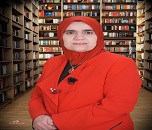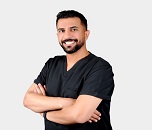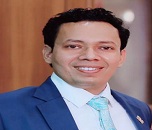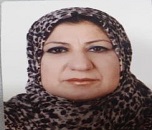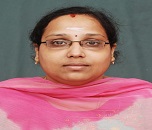5950
Scientific Program
Keynote Session:
Title: Orthognathic Surgery Trending: Retrospective Ten Years Cases Analysis in Nineveh Province / Iraq (Biometric Analytical study)
Biography:
Ninevah Health Directorate / MOH , Iraq
Abstract:
Running Title: Analysis of Orthognathic Cases in Mosul City
Abstract
Aim: The study aimed at analyzing patient's case sheets in regard to the incidence of skeletal discrepancy present in cases and its relation with the demographic profile of the sample. All these chronicled for more than 10 years periods.
Material and Methods: Retrospective study analysis of the orthognathic cases sheets for more than 10 years period. Total numbers of patients are 678. Patient's case sheet already prepared by the Multi-Disciplinary Team Orthognathic Surgery Clinic in Al-Salam Teaching Hospital which is the only authorised committee in Nineveh Health Directorate. The case sheet of each patient analysed.
Result: Highest age percentage is between (18 – 27 years / 76 %). Angle Class III cases are the uppermost cases (36 %) from the total. Significant p value is clear at level ≤ 0.05 and ≤ 0.01 as correlation between surgery type and discrepancy in anterior segmental osteotomies (upper and lower) which performed in Bi-Maxillary Protrusion cases and Angle Class II cases (0.01**). Similarly anterior segmental osteotomies (upper jaw only) which indicated in both open bite and Angle Class II cases documented as statistically significant p value (0.02*). Significant correlation is shown in all variables with the disharmony or facial discrepancies.
Conclusion: This study documents that patients with skeletal Class III accounted for the largest percentage (64%) in the study group. The bimaxillary surgery was the most frequently performed surgery (49.2%) and there was statistically more frequent for skeletal Class III, and one jaw surgeries for skeletal Class II
Title: Zirconia implant supported restorations: from planning to execution
Biography:
Dr. Khaled Alzahrani is an Associate Professor and consultant Prosthodontist at Prince Sattam bin Abdulaziz University, Saudi Arabia. Dr. Alzahrani received his Advanced Prosthodontics specialty training at the Herman Ostrow School of Dentistry, University of Southern California, Los Angeles, USA. He is a Canadian Board-Certified Prosthodontist and a Fellow of the Royal college of Dentist of Canada
Abstract:
Abstract of the presentation:
Advancements in computer-aided design and computer-aided manufacture (CAD/CAM) technology in dentistry have made possible the forming of dental restorations with high-performance materials that could not be easily shaped with conventional methods. One of these restorations that are commonly used nowadays, Zirconia implant supported prostheses.
This presentation will focus on the proper zirconia framework design when using layered zirconia and other new technologies that help restoring malpositioned implants with a screw retained restoration.
Presentation content:
• Zirconium dioxide : An overview.
• Risks and benefits of using monolithic zirconia restoration in cases of full mouth rehabilitation
• Proper zirconia framework design when using layered zirconia.
• New technologies that help restoring malpositioned implants with a screw retained restoration.
- Selected cases: From planning to execution
Title: Measurement and Evaluation of the Normal Range of Maximal Mouth Opening and Its Correlation with Age, Body Height, Weight, and Gender in the Young Indian Population.
Biography:
Professor
Department of Pedodontics and Preventive Dentistry, Post Graduate Institute of Dental
Sciences, Pandit Bhagwat Dayal Sharma University of Health Sciences, Rohtak Haryana,
India.
Department of Pedodontics and Preventive Dentistry, Post Graduate Institute of Dental
Sciences, Pandit Bhagwat Dayal Sharma University of Health Sciences, Rohtak Haryana,
India.
Abstract:
Abstract:
Aim: To measure and evaluate the normal range of maximal mouth opening (MMO) in young children aged 3 to 12 years from Indian population and to examine the possible influence of age, gender, height, and body weight on MMO.
Materials and methods: The assessment of MMO is accomplished with a modified Vernier caliper by measuring the distance between the incisal edge of upper and lower incisor during MMO up to the painless limit. Participants of the study were healthy children selected among regular students from local schools. Age, gender, height, and body weight of each child were also recorded at the same time.
Results: The results of the present study revealed that MMO in Indian children was 41.61, 44.9, and 46.81 mm for boys and 40.09, 44.22, and 46.2 mm for girls at age of 3, 4, and 5 years respectively. In mixed dentition, the MMO in Indian children was 46.04, 48.53, and 52.38 mm for boys and 45.95, 47.27, and 52.05 mm for girls at age groups of 6 to 8, 8 to 10, and 10 to 12 years respectively. Further significant associations were noted between age, height, body weight, and MMO. However, no gender difference was observed.
Conclusion: A definite relationship exists between MMO, age, height, and body weight in Indian children with primary dentition as well as in mixed dentition.
Keywords: Age, Body height, Body weight, Children, Gender, Mouth Opening
Aim: To measure and evaluate the normal range of maximal mouth opening (MMO) in young children aged 3 to 12 years from Indian population and to examine the possible influence of age, gender, height, and body weight on MMO.
Materials and methods: The assessment of MMO is accomplished with a modified Vernier caliper by measuring the distance between the incisal edge of upper and lower incisor during MMO up to the painless limit. Participants of the study were healthy children selected among regular students from local schools. Age, gender, height, and body weight of each child were also recorded at the same time.
Results: The results of the present study revealed that MMO in Indian children was 41.61, 44.9, and 46.81 mm for boys and 40.09, 44.22, and 46.2 mm for girls at age of 3, 4, and 5 years respectively. In mixed dentition, the MMO in Indian children was 46.04, 48.53, and 52.38 mm for boys and 45.95, 47.27, and 52.05 mm for girls at age groups of 6 to 8, 8 to 10, and 10 to 12 years respectively. Further significant associations were noted between age, height, body weight, and MMO. However, no gender difference was observed.
Conclusion: A definite relationship exists between MMO, age, height, and body weight in Indian children with primary dentition as well as in mixed dentition.
Keywords: Age, Body height, Body weight, Children, Gender, Mouth Opening
Title: Evaluation of Recently Proposed Scales as Predictors of Mandibular Third Molar Extraction Difficulty
Biography:
Ninevah Health Directorate / MOH , Iraq
Abstract:
Abstract
Background: The Prediction of extraction difficulty of impacted mandibular third molar (M3M) is extremely important for both patients and clinicians. Recently, many new difficulty-estimating indices had been proposed, among them are, Zhang et al., Kim et al., Pernambuco, Lainez et al., and Roy et al. indices. This study aimed to evaluate the validity of these new scales as preoperative predictors of the difficulty of surgical removal of impacted M3M.
Material and Methods: The five scales under study predicted extraction difficulty of a series of 50-impacted M3M preoperatively, and postoperative difficulty was assessed with Parant scale (PS) and by the time required for surgery (TS).
Material and Methods: The five scales under study predicted extraction difficulty of a series of 50-impacted M3M preoperatively, and postoperative difficulty was assessed with Parant scale (PS) and by the time required for surgery (TS).
Results: The proposed indices had low to moderate sensitivity (21%-45%, 41%-67%) and variable in their
Specificity (21%-86%, 36%-85%). Only three out of five evaluated indices have shown a Statistically significant correlation with both, the operation time and the surgical technique; namely, Zhang et al., Pernambuco, Lainez et al. indices.
Conclusions: Zhang et al., Pernambuco, Lainez et al. indices can be used as preoperative predictors of the impacted M3M extraction difficulty.
Title: Salivary biomarkers as an aid to molecular research
Biography:
Sri Ramachandra Dental College And Hospital, India
Abstract:
Salivary glands are compound exocrine glands. There are three pairs of major salivary glands while several minor salivary glands are distributed around the mucosa of the oral cavity. The daily volume of the saliva secreted in about 750 to 1000 ml and it takes approximately 3- 5 hours from synthesis to secretion. The daily average flow of saliva is 500 to 1500 ml per day with a mean volume of 1 ml in the oral cavity. Several substances including electrolytes, secretory proteins, immunoglobulins and growth factors are found in saliva. These can be used as biomarkers for diagnostic, prognostic and theragnostic purposes.
Salivary genome is composed of 70% human and 30% microbial DNA. The quality of salivary genome is found to be very good for applications and nearly 72-92% of the salivary samples can be genotyped effectively. The salivary genetic and epigenetic analyses provide gene-transcription profiles that effectively reflect abnormal pathological genetic processes. High throughput analytical systems such as microarrays can help in demonstration of salivary mRNAs. MicroRNA studies using RT-PCR and TaqMan arrays can aid in cancer genetics. Two-dimensional gel electrophoresis and mass spectrometry is of immense aid in salivary proteomics. Capillary electrophoresis in combination with mass spectrometry can help in evaluation of salivary metabolites thereby aiding in distinguishing healthy subjects from diseased individuals.
Diagnostic uses of salivary biomarkers have been established in several fields including caries and periodontal diseases, autoimmune diseases, forensics, substances & drug abuse, cardiology with an impetus on myocardial infarction, diabetes, renal diseases, psychological disorders and infectious diseases including the recent pandemic outbreak of Sars- Cov2.
Saliva has several advantages in being used as a diagnostic medium such as easy, patient – compliant collection process that is not only simple and faster but also being cost- effective and a long-time stable material thereby making it an ideal translational research tool.
References:
- Salivary Diagnostics, Current Reality and Future Prospects. http://dx.doi.org/10.5772/59417
- Collection, Storage, and Processing of Saliva Samples for Downstream Molecular Applications. Methods in molecular biology (Clifton, N.J.) · July 2010 DOI: 10.1007/978-1-60761-820-1_2

